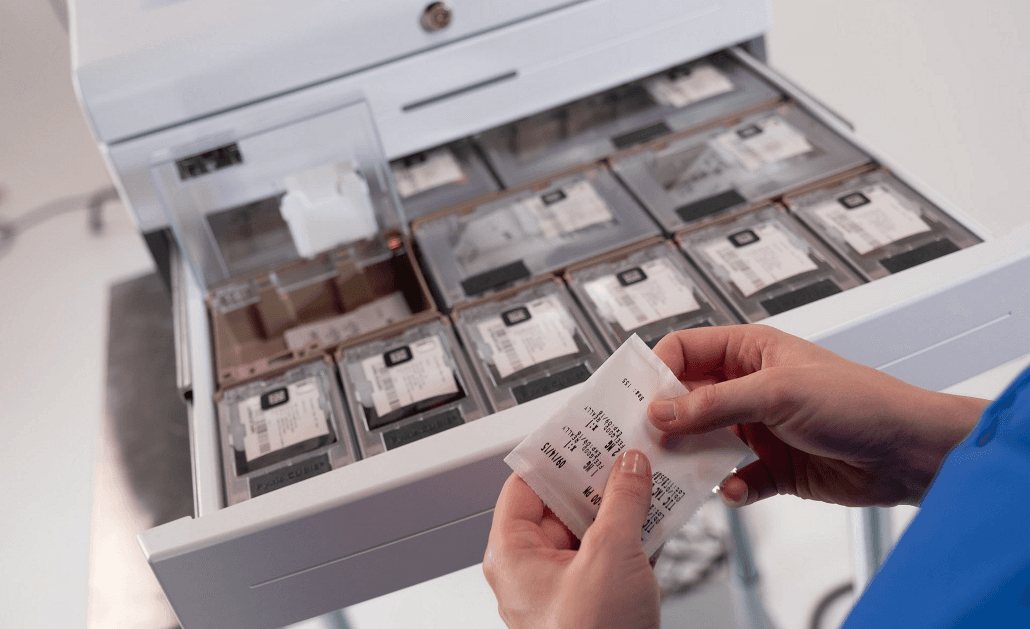
It’s no secret that prescription drug misuse is a significant public health concern. In the United States alone, more than 14 million people misused prescription drugs in the past year, according to figures from the National Institute on Drug Abuse.
In response, governments around the world have taken steps to restrict access to prescription drugs and curb medication diversion in the human healthcare sector. However, as those working in veterinary medicine know, prescription drug access isn’t just an issue among human healthcare providers - it’s a problem among animal healthcare providers, too.
In this blog post, we'll explore why veterinary professionals are a crucial piece of the puzzle when it comes to preventing drug diversion and misuse, and what steps you can take to ensure the safe and responsible use of controlled substances in your practice.
Why drug management matters
With hundreds of millions of animal patients seen annually in the USA alone, veterinarians play a significant role in the controlled substance landscape. Veterinary professionals are responsible for ordering, storing, and dispensing a broad range of controlled drugs, including drugs that have a high potential for addiction and/or abuse. Larger practices may make more than 1,000 controlled substance dispenses per month, according to figures collated in a recent CUBEX study.
Some common examples of controlled substances include:
- Buprenorphine.
- Butorphanol.
- Fentanyl.
- Tramadol.
- Ketamine.
- Diazepam.
- Midazolam.
In addition to controlled substances, veterinary practices also frequently dispense medication classified as dangerous drugs (or drugs of concern). The average practice dispenses 1,200 dangerous drugs per month.
Some common examples of dangerous drugs include:
- Gabapentin.
- Proin/Phenylpropanolamine.
- Propofol.
- Xylazine.
- Trazodone.
- Methocarbamol.
- Fluoxetine/Prozac.
- Insulin.
- Prescription drug pads.
- Zofran.
Veterinary practices use a range of measures to control access to these drugs. This includes things like inventory control, prescription documentation, and regular monitoring and screening for signs of misuse or diversion.
However, time constraints, competing priorities, and good old-fashioned human error mean that substance access isn’t always as tightly controlled as it should be. For example, drugs stored in flimsy office cabinets or lockers may be susceptible to theft or vandalism, while inaccurate documentation - due to, say, lost records, illegible handwriting, or forgotten entry logs - may increase the risk of drug misappropriation.
While it’s difficult to determine exactly how widespread the issue is, evidence suggests that drug misuse and misappropriation are not uncommon in the veterinary sector. The results of a survey published in the Journal of the American Veterinary Medical Association indicated that about 73% of veterinarians had worked in a veterinary workplace with someone they suspected or knew had an abuse or addiction problem involving illicit or prescription drugs. Similarly, a 2018 survey of 189 Colorado veterinarians found that 44% were aware of opioid abuse or misuse by either a client or a hospital staffer.
Why should you use a controlled drug management integration?
In response to the growing need for better veterinary drug control, many practices use controlled drug management systems that are designed to help limit access to controlled substances.
Here at ezyVet, we’re proud to integrate with a number of innovative controlled drug management solutions, allowing you to manage controlled substances and digitize your controlled drug record keeping directly within ezyVet.
Here are just some of the ways a controlled drug management integration can help you reduce the risk of drug misuse and diversion:
- Automated logging: Unlock better visibility of your controlled substances inventory. Digitizing your controlled drug logbook reduces the risk of inaccuracies and/or missing records, while automated logging functionality ensures that controlled substances are secured and accounted for.
- Automate Prescription Monitoring Program (PMP) reporting: Veterinarians are no longer exempt from PMP reporting, which has resulted in more hours of administrative burden for staff, in addition to significant legal risks. Some solutions can automate the reporting process, helping veterinary professionals save time and stay focused on patient care.
- Automatic reconciliation: Some solutions provide automatic reconciliation. If the software identifies a discrepancy in your records that could indicate potential drug misappropriation, it issues a real-time alert so you can swiftly investigate the issue.
- Better compliance: Drug management solutions can help veterinary practices meet compliance requirements as governments introduce increasingly stricter rules and regulations relating to controlled substances.
- Automated dispensing solutions: Physical inventory management systems also have a role to play in drug management. CUBEX, for example, provides DEA and 50 state compliant automated dispensing systems to help practices maintain a safe and efficient work environment.
Which controlled drug management solutions integrate with ezyVet?
ezyVet is integrated with a range of controlled drug management solutions, including:
Takeaway
ezyVet’s controlled drug management integrations help facilitate the safe and responsible use of controlled substances. Digitize your controlled drug logbook, effortlessly meet compliance requirements, and automatically identify stock discrepancies - all without leaving ezyVet.
For more information, check out the full list of ezyVet’s controlled drug management integrations.